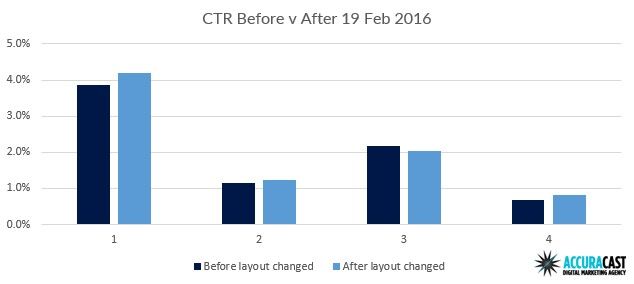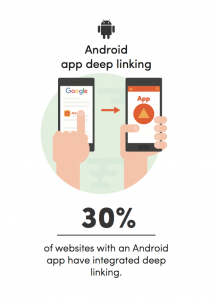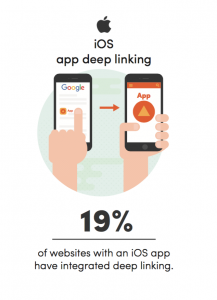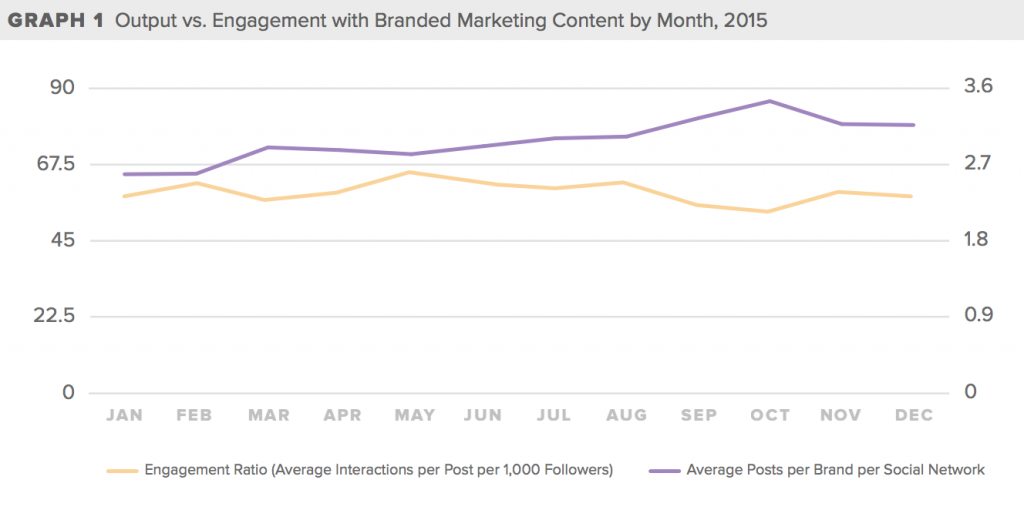As we leave March behind and look forward to the comparatively warmer weather of April, let’s continue to stay indoors while looking at a laptop screen and revisit the most interesting online stats of the last four weeks because it’s probably going to rain today anyway.
Grumpy weather humour! Let it not be in any doubt that the editor of this website is British.
Mobile ad spend overtakes desktop for the first time
According to Marin in an analysis of $7.8bn of annualised ad spend, mobile has overtaken desktop for the first time, with more than 50% of budgets spent on mobile ads.
- Social ads accounted for three-quarters of clicks and 71% of spend
- Three out of five display conversions took place on a smartphone, a 30% increase on last year
- Click-throughs on search ads were more than three times higher than social and display
- Search ads on desktop still attract more impressions and conversions, however, smartphones continued to dominate year-on-year growth, with clicks and spend rising 13% and 11%, respectively.
First week results of Google killing Right Hand Side Ads – CPC
Kenshoo published new research revealing some early results from Google’s recent removal of Right Hand Side Ads.
Among the key revelations from the first week the change happened:
- A one penny (or roughly 1%) decrease in CPC
- Average position improved by 0.2, moving ads closer to the top of the page on average
- Week-over-week changes to click and spend volume were ultimately within normal weekly variance, with a small increase in clicks and a smaller increase in spending due to the drop in average CPC
First week results of Google killing Right Hand Side Ads – CTR
Possibly surprising nobody, the click-through rate has increased on paid search results at the top of the screen.
Accuracast has taken a look at the CTR during the 7-day period before and after the change in ad placements on Google desktop search.
It shows a large increase of 18.2% for ads in position 4, and substantial increases for position 1 and 2 (8.4% & 7.7% respectively).
Interestingly, the only ad position where the CTR dropped after the change, has been for position 3.
Nearly three-quarters of online buyers use mobile to shop
According to a survey of 9,142 online consumers in the US and Canada by Bizrate Insights, 73% of online buyers use mobile devices to shop online.
However, only one in five (21%) use mobile devices to assist their in store shopping experience.
- 63% who use mobile devices in store are looking for competitors’ coupons and prices.
- 53% compare a retailer’s in store and online prices and coupons
- 39% check that an item is in stock before visiting a local store
Google stats on mobile-centric search
In a Think With Google post this month, Lisa Gevelber offered up loads of juicy stats and guidance on where to begin with mobile search, particularly for luxury brands.
Here’s a quick run-down:
- Mobile makes up 88% of all ‘near me’ searches, with those mobile searches growing at 146% year over year.
- For automobiles, the most popular mobile-centric searches are for luxury car price enquiries. For instance ‘Tesla price’, ‘Maserati price’ and ‘Audi R8 cost’. These grew nearly 90% on mobile from 2014 to 2015.
- For jewellery, the most popular mobile search is for ‘promise rings’. These related mobile searches grew by 77% from 2014 to 2015 and tended to spike around the holidays and Valentine’s Day.
- For hotels, data from Hotels.com states that 74% of mobile bookings are made for same-day check-in. The most popular mobile-centric hotel search themes include ‘near me’, ‘cheap’ and ‘price’.
Only 20% of iOS apps and 30% of Android apps support app indexing
Brands are missing out when it comes to enabling deep linking in their apps, which allows Google to crawl its content beyond the mobile web.
According to Searchmetrics, in a study of the 100 most visible websites in Google US searches, it’s been found that although 84% offer an Android App, only 30% of these had implemented app-indexing.
And then of the 88% that offer an iOS app, just 19% were found to be support app-indexing.
Digital ad spend to surpass television in 2017
According to eMarketer, total digital spend will surpass TV for the first time next year.
In 2017, TV ad spending will total $72.01 billion, or 35.8% of total media ad spending in the US.
Meanwhile, total digital ad spending in 2017 will equal $77.37 billion, or 38.4% of total ad spending.
By 2020, TV’s share of ad spending will drop below one-third.
‘Peak content’ has been reached for brands
As Chris Lake reported this month, a recent TrackMaven report has looked at the content marketing activity of almost 23,000 brands and their 50m published pieces of content.
It turns out that the average brand publishes more than 2,000 pieces of content a year, and in 2015 this increased by 35% compared to the previous year.
Although there were a total of 75.7bn interactions, the average engagement actually decreased by 17%.
The chart below shows the widening attention gap, based on the volume of shares on social platforms vs response rates.
For more detailed analysis, check out the report.
Investment in mobile app ads drives 196% increase in installs
Kenshoo has published a new report on mobile app advertising detailing a few interesting industry trends, including…
- Total spend on mobile app install ads increased 155% year-over-year (YoY)
- Mobile app installs increased 196% YoY
- Cost per install decreased 14% YoY
- App install ads on Instagram delivered more than 20% of all app install ad
clicks - Once consumers click on a gaming app ad, they are much more likely to install compared to consumer apps (39% vs. 11%) resulting in a drastically reduced cost per install (CPI) ($1.73 vs. $2.70)
Snapchat now boasts 8 billion video views per day
It was only in January when Snapchat stated it had 7 billion video views per day. Now, barely more than a month later, you can add another billion to that number.
This is even more impressive when you consider that Snapchat had ‘just’ two billion daily video views in May 2015.
According to Recode Snapchat is serving the same number of daily video views as Facebook.
The article 29 most interesting SEM stats from March 2016 was first seen from https://searchenginewatch.com





No comments:
Post a Comment